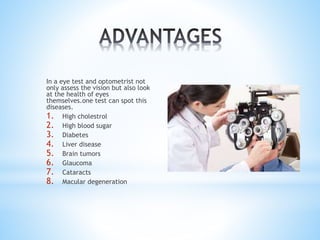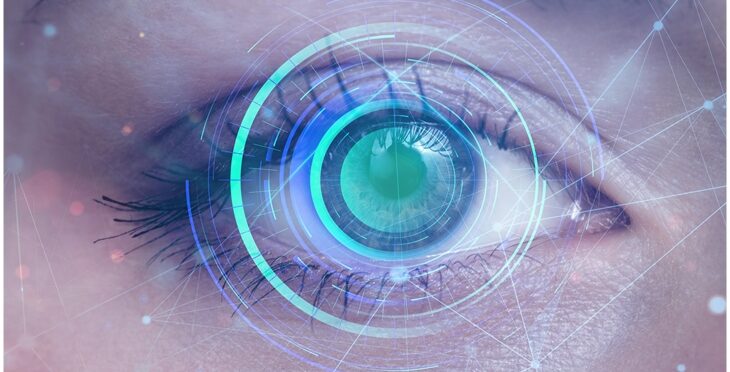The Duty of Advanced Diagnostic Devices in Identifying Eye Disorders
In the realm of ophthalmology, the usage of advanced diagnostic tools has actually reinvented the early identification and administration of various eye problems. From finding refined changes in the optic nerve to monitoring the progression of retinal conditions, these innovations play a critical duty in enhancing the accuracy and effectiveness of identifying ocular conditions. As the need for precise and timely diagnoses remains to expand, the combination of advanced devices like optical coherence tomography and visual field testing has actually come to be vital in the world of eye treatment. The detailed interplay in between technology and ophthalmic practices not just sheds light on elaborate pathologies yet likewise opens up doors to customized treatment approaches.
Value of Very Early Medical Diagnosis
Early diagnosis plays a critical function in the effective management and treatment of eye problems. Timely recognition of eye conditions is important as it allows for punctual intervention, possibly stopping further progression of the condition and lessening long-lasting issues. By identifying eye problems at an early stage, medical care companies can provide suitable treatment strategies customized to the certain problem, eventually causing far better end results for patients. Very early medical diagnosis enables patients to accessibility needed assistance solutions and sources faster, boosting their total high quality of life.
Modern Technology for Discovering Glaucoma
Sophisticated diagnostic innovations play an essential role in the early detection and tracking of glaucoma, a leading reason of irreversible blindness worldwide. One such innovation is optical coherence tomography (OCT), which gives thorough cross-sectional images of the retina, enabling for the measurement of retinal nerve fiber layer thickness. This measurement is crucial in assessing damage caused by glaucoma. Another innovative tool is aesthetic field testing, which maps the level of sensitivity of a client's visual area, helping to discover any kind of areas of vision loss quality of glaucoma. In addition, tonometry is made use of to measure intraocular stress, a significant risk variable for glaucoma. This test is crucial as raised intraocular stress can lead to optic nerve damage. Additionally, more recent modern technologies like the use of man-made intelligence formulas in evaluating imaging data are revealing appealing lead to the very early discovery of glaucoma. These advanced analysis devices enable eye doctors to identify glaucoma in its onset, permitting prompt intervention and much better monitoring of the condition to prevent vision loss.
Role of Optical Coherence Tomography

OCT's ability to evaluate retinal nerve fiber layer thickness allows for exact and objective dimensions, helping in the early discovery of glaucoma also prior to visual area flaws become noticeable. Moreover, OCT innovation allows longitudinal surveillance of architectural changes with time, assisting in personalized therapy plans and timely treatments to assist maintain clients' vision. The non-invasive nature of OCT imaging also makes it a favored selection for keeping track of glaucoma development, as it can be repeated on a regular basis without triggering pain to the client. Overall, OCT plays a vital duty in improving the analysis investigate this site accuracy and management of glaucoma, inevitably adding to far better results for individuals in jeopardy of vision loss.
Enhancing Diagnosis With Visual Field Testing
A necessary part in thorough ocular analyses, aesthetic area screening plays a crucial duty in boosting the analysis procedure for different eye conditions. By examining the full degree of a patient's aesthetic area, this test offers critical information about the useful honesty of the whole aesthetic path, from the retina to the visual cortex.
Visual area screening is especially important in the diagnosis and management of problems such as glaucoma, optic nerve problems, and numerous neurological illness that can affect find out here now vision. Via measurable dimensions of outer and main vision, medical professionals can find subtle changes that might suggest the existence or development of these problems, also before recognizable signs and symptoms occur.
Furthermore, aesthetic field screening enables for the monitoring of therapy efficiency, aiding eye doctors customize healing treatments to specific patients. eyecare near me. By tracking adjustments in visual area efficiency over time, medical care suppliers can make informed choices about readjusting medications, advising surgical treatments, or implementing various other appropriate procedures to preserve or improve a person's visual feature
Managing Macular Degeneration

Final Thought
To conclude, progressed diagnostic devices play an important function in recognizing eye conditions early. Technologies such as Optical Coherence Tomography and visual field testing have actually significantly boosted the precision and performance of diagnosing conditions like glaucoma and macular degeneration. Early discovery permits for prompt intervention and management of these disorders, inevitably bring about far better outcomes for clients. It is vital for health care experts to remain upgraded on these developments to provide the most effective feasible care for their individuals. eyecare near me.